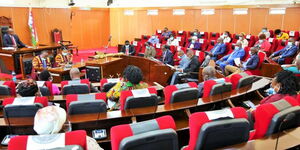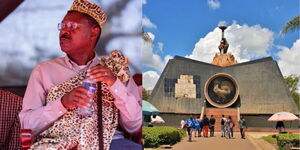The Kenya National Bureau of Statistics on Friday, February 21 officially released the results of the 2019 census.
This gave members of the public insight into the country's population based on the different demographics that exist within our borders.
As the country continues to wade in the massive job losses and unemployment gaps in the country, Kenyans.co.ke gives an insight on how the youth and the unemployed could use the demographic data to launch startups, grow existing businesses or the location a particular business could thrive in.
In the final report, the Kikuyu community emerged as the most populous community in the country with 8,148,668. The Luhya followed at 6,823,842, and the Kalenjin a close third at 6,358,113 people.
The Kamba and the Luo came in at fourth and fifth with populations 5,066,966 and 4,663,910 respectively. The Somali and the Kisii owned position six and seven at 2,780,502 and 2,703,235.
The Mijikenda, Meru and the Maasai wrapped up the ten most populous communities with numbers of 2,488,691, 1,975,869, and 1,189,522.
Slotting in as the least populous communities in the country were the Dahalo at 575, Kenyan Americans 596, Gosha 685, Elmolo with 1,104 and the Konso with 1,299 people.
Nairobi, Kiambu, Nakuru, Kakamega and Bungoma topped the most populous county list while Lamu Isiolo, Samburu, Tana River, and Taita Taveta are the least populous.
What many fail to know is, understanding the demographics of your target customers is the backbone of a successful business. One not only needs to understand the consumer in order to make a decision on the type of products and services to render, but also the fact that the information can determine packaging, promotion, pricing, and location.
Basic information such as the economic factor; the degree of disposable income within the community- other than their basic income, do they have extra money to spend. Learn about their residences- are they renting? Or do they own the homes?
Transportation; how do they move about? Do they take public transport or do their own cars? Age; find out of if the target population is dominated by young people struggling to make a living, young professionals, or the retired.
In reference, the youth have desires that the elderly lack, a greater demand but also at a relatively lower price. A business with expensive products is not likely to do well as expected or at least should, as most young people in the country sort of cap their expenditure.
Family status; either single people or mostly families dominate a region. Leisure activities; what are the recreational hobbies of the community?
A community dominated by couples generates a higher demand. Mostly from the numbers and the responsibility to take care of family, especially children. Single people, on the other hand, have capped expenses. Meaning a reduced demand, and limited opportunities.
Demand and market size; does the community you are targetting desire what you have to offer? And how many people, what is the percentage of people interested in the product? Market saturation; how many competing products are in the available?
The population of counties is a key factor in the establishment of several businesses. It was revealed that of the 47 million Kenyans in the country, over 35 million were below the age of 35.
This gives a clear indication of a young generation with a majority still pursuing education. Therefore, the more populous the higher the chances of setting up educational centres in the region.
A higher population also does call for the need for health facilities, recreational centres, and a larger portfolio of businesses.
When looking to start a business using the census data KNBS just released, understand the profile of your target customers. See if the community has the traits required to foster your business.
Kenya's coast is dominated by the hospitality industry and the transport industry because of the beaches and the port. Therefore, a business in the region has to be in line with the demands of the region, the culture, and the reputation it has built.
With the over 42 communities in the country and the disparity in cultural preferences, it is important that one considers this before establishing a business. How familiar is the community with the services you offer?
Maize prices in Uasin Gishu differ greatly from that in Mombasa. A retail business on cereals would thrive better at the coast, and at a relatively higher price than it would in the Rift Valley. Primarily because Uasin Gishu has many people who have ventured into farming.
For instance, counties dominated by small scale farmers do not favour people looking to venture into the grocery industry as well because most people have them on their gardens.
Regions in the country with low levels of education welcome little investment on technology-based startups and business, due to the select population that can relate.
The census results revealed that Kenya has more women in formal employment than there are men, giving an indication that they provide a larger market than men.
Therefore, a business with products targeting women, family products are on relatively higher demand.
Kenya's exposure to the internet is rising fast, and in most town and cities, has created a window of employment and job creation.
For industrials and agriculture, the census data will facilitate the establishment of the right target consumer of the product, the required labour, and the infrastructure within the community.












